PRESENTATION: Inside Other Spaces (Environments by Women Artists 1956-1976)
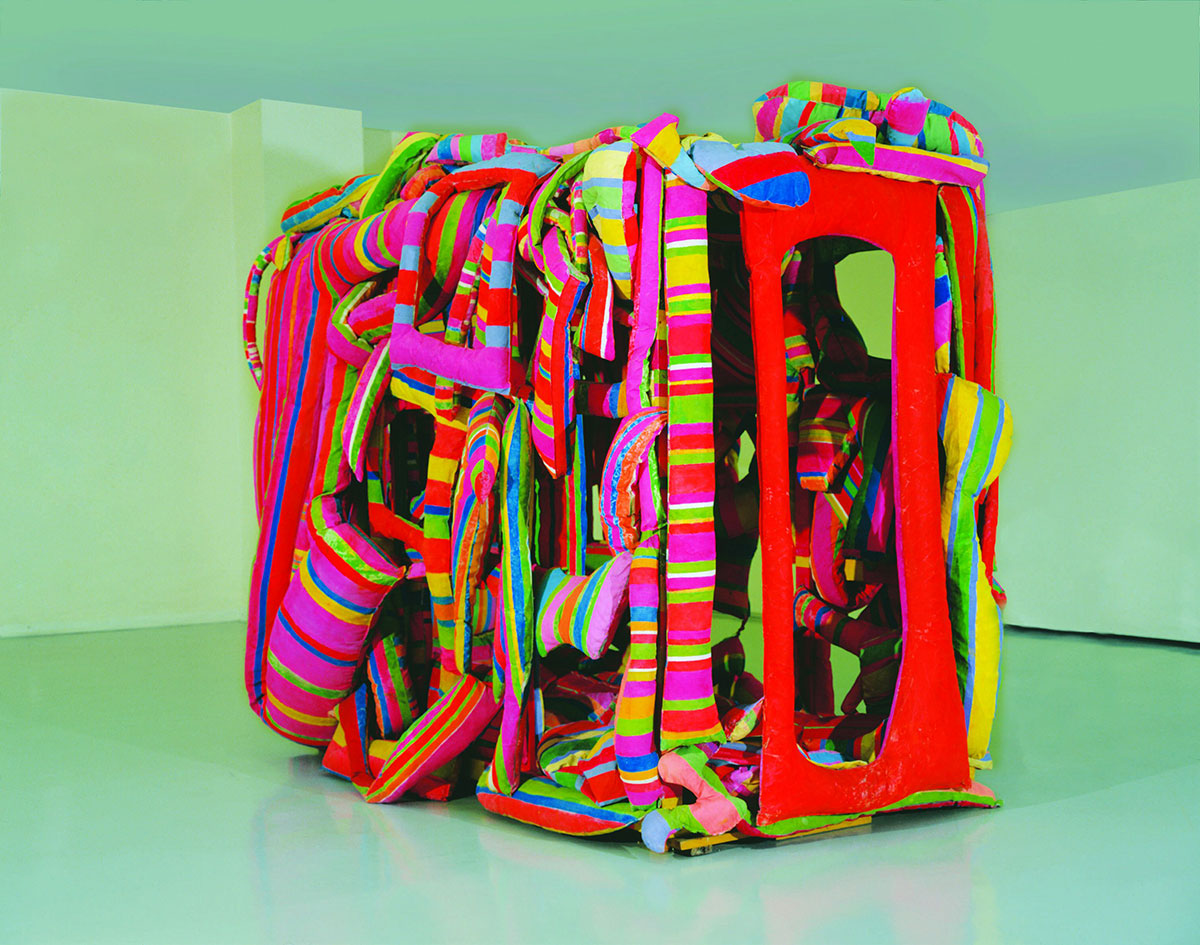 Spanning three generations of artists from Asia, Europe as well as North and South America, the exhibition “Inside Other Spaces. Environments by Women Artists 1956–1976” reframes the accepted artistic canon by presenting women’s fundamental role in the development of immersive art, which has gone on to have a lasting impact in the field of visual art.
Spanning three generations of artists from Asia, Europe as well as North and South America, the exhibition “Inside Other Spaces. Environments by Women Artists 1956–1976” reframes the accepted artistic canon by presenting women’s fundamental role in the development of immersive art, which has gone on to have a lasting impact in the field of visual art.
By Dimitris Lempesis
Photo: Haus der Kunst München Archive
Following three years of research and development, Haus der Kunst München as part of its ongoing re-examination of overlooked histories, presents the landmark exhibition “Inside Other Spaces. Environments by Women Artists 1956–1976”. Situated at the threshold between art, architecture and design, the term environments was adopted in 1949 by the artist and founder of Spatialism, Lucio Fontana, to define a new type of artwork that actively involved its audience. Over the years, environments became a major feature in the international art world, however the historic narrative focuses almost exclusively on the works of male artists. The exhibition the first show of its kind to painstakingly reconstruct the immersive art works, following a three-year research process, supported by the help of conservators and researchers digging deep into archival material, such as photographs, architectural plans, reviews, materials’ lists and providers’ invoices. The exhibition continues to 1976, the date of the first historic review of these experiential works with the exhibition “Ambiente/Arte dal Futurismo alla Body Art” curated by Germano Celant for the 37th Venice Biennale.
Judy Chicago is a visual artist, writer and art educator best known for her feminist art practice, which critically questions (male) power structures in society and the role of women. Across different materials and techniques, such as ceramics, plastics and paintings, she generates a unique imaginary that challenges dominant historical, societal and cultural narratives. In Chicago’s artistic practice, the works function as a vehicle for social and political change, concentrating specifically on women’s rights. Throughout her six-decade long practice, Chicago has always fostered collaboration and exchange: for example, she founded the first Feminist Art Program at California State University, Fresno, and together with Miriam Shapiro, initiated Womanhouse in Los Angeles, an exhibition space solely concerned with presenting works by women artists in 1972. In promoting a female quality in art, Chicago taps into the concept of essentialism. Being aware of that issue, she claims that foregrounding women’s experiences is vital to change prevailing living realities, art histories and patriarchal narratives. The environment “Feather Room” was conceived together with Lloyd Hamrol and Eric Orr with whom she was collaborating under the informal name Rooms Company. Feather Room was first presented at Rolf Nelson Gallery in Los Angeles in 1966. Playing with light and space, the public is invited to immerse itself in this soft and playful environment. For the show, the work will be replicated according to Chicago’s initial conceptions: creating an infinite experience of light, materiality and texture.
Lygia Pimentel Lins, known as Lygia Clark, was a Brazilian abstract artist, best known for her painting and sculptural works. She was associated with the Constructivist movement and a leading figure in the Neo-Concrete movement in Brazil in the 1950s, fostering the interaction with the spectator and the utilization of applied materials. In foregrounding the viewer’s experience, Clark aimed to raise their bodily awareness through soft sculptures and sensorial objects and focused on the unconscious senses such as touch or hearing. Interested in participants’ unconscious sensations and bodily memory, Clark interrogated the relationship between inside and outside as well as between self and world through masks and robes, which participants had to wear to enhance their experience of the self and of the others. “A casa é o corpo. Penetração ovulação, germinação, expulsão” (1968), is the only environment made by Clark and somewhat summarizes all her concerns towards the perception of the body as well as of the inner self. The process of physically experiencing the environment by pushing successively through spaces titled “Penetration”, “Ovulation”, “Germination” and “Expulsion”, allows the participants to replicate the experience of being conceived and then being born. In the later stages of her artistic practice, Clark’s focus shifted into the psychotherapeutic and she considered her work as being more in the realm of psycho-analysis than art, yet the node of the body as a house remained.
Born in Greece, Laura Grisi began her artistic career in Italy in the mid-1960s, challenging traditional forms and materials in art and involving the spectator in this scrutinisation. Associated with the Arte Povera movement, Grisi investigated themes of time, space, infinity and natural elements, exploring ecological concerns in depths. In 1968, she created a series called Natural Elements in which she artificially reproduced natural phenomena like wind, fog or air in enclosed spaces. With these immersive works, Grisi interlinked technological-scientific research with aesthetic-perceptive questions to trigger different sensations and reactions in the audience. In the late 1960s, Grisi began measuring wind during her extensive travels around the world and filming the action of measuring. “Inside Other Spaces” presents an environment originally conceived by Grisi for the Galleria la Tartaruga in Rome: Vento di Sud Est (Wind Speed 40 Knots) confronts the public with a sudden flux of strong air in an enclosed dark space. The wind speed ensures a powerful, poignant, yet intimate experience: the public has to brave the natural element and at the same time align body and sensations with it.
Best known for her large-scale works in public spaces and her architectural textile installations Aleksandra Kasuba studied sculpture and textiles at the Kaunas School of Arts in Lithuania. In 1944, as a consequence of the Nazi and Soviet occupations, she fled the country with her sculptor husband, ending up in a displaced-persons camp in Germany until 1947, when the couple moved to New York. Her multidisciplinary practice moved on the threshold between design, architecture and art, constantly experimenting with materials and scale and included sculpture, writing and poetry, in particular. Kasuba’s Space Shelters, environments made of fabric and without ninety-degree angles, testify to her desire to harmonise people, nature and technology. Kasuba’s artistic practice was based on exchange and collaboration with fellow artists; for instance, her Live-In Environment (1971–72) featured works by colleagues like Silvia Heyden’s yak hair unit or Emanuel Ghent’s computer-generated sounds. Her research has had a profound impact on a younger generation, including for example emerging Lithuanian artist Emilija Škarnulytė. Still not enough known, the work of Kasuba was the subject of a retrospective in Vilnius at the National Art Gallery in 2020. Reconstructed for the exhibition at Haus der Kunst is Spectral Passage, a large-scale Environment, first presented at the M. H. de Young Memorial Museum in San Francisco in 1975. It consists of six self-enclosing colour structures that are connected and invite the public to meander through, accompanied by Gustav Holst’s orchestral suite The Planets. The colours of Kasuba’s environment correspond with different energies, movements, feelings and symbols and thus, create a unique immersive experience.
Lea Lublin was an Argentine-French visual artist whose artistic practice was shaped by feminism and psychoanalysis. She is widely known for her large-scale environments and installations, performances and sculptures. She began her artistic career as a paintress but quarreled with the medium’s self-referentiality of inevitably referring back to other paintings. Having grown up in Argentina, Lublin moved to Paris in 1965 where she embarked on what she termed “proceso a la imagen” – a process to the image – that incorporated any form and material suitable to scrutinise the social and political conventions of art. For example, with the series Voir clair, repainted reproductions fitted with a water balloon and windscreen wipers, Lublin invited the public to rethink their relationship with art in a participatory manner. In 1969, she moved back to Buenos Aires where the Instituto Torcuato di Tella had become the epicenter of innovative experiments in the field of environments. At the institute, Lublin installed her first immersive installation, Terranautas in 1969, followed by the commission of Fluvio Subtunal in Santa Fe in the same year. Since the early 1970s, feminist and psychoanalytical questions guided her artistic practice: notions around participation and the physical and symbolic penetration of images and spaces became core themes in her oeuvre. For Lublin, art was political, analytical and communicative for which the active participation of the audience was essential. In “Inside Other Spaces”, visitors can actively engage with artworks that deal with the topic of vision, transparency and procreation. By moving through Phallus Mobilis, a hanging forest of inflatable cylinders and entering in Penetración/Expulsión, an over 20 meters long inflatable plastic tunnel, the public experience the act of procreation meandering with the notion of seeing and being seen.
Marta Minujín is one of the most acknowledged post-war artists whose conceptual and performative practice is spanning over six decades. Championed as a pioneer of happenings, performance and pop art, she foregrounds the participation and experience of the public. By creating intense, surprising and sometimes uncomfortable situations, Minujín aims to tease out the visitors’ curiosity and evoke feelings. After receiving formal training in Buenos Aires, she went to Paris where she staged her first happenings, most notably La Destruccíon where she burned the works that had previously been shown in an exhibition. In 1963, Minujín began producing a series of soft sculptures named Colchones – inhabitable structures consisting of amongst others, mattresses and blankets. “Inside Other Spaces” presents ¡Revuélquese y viva!, an environment that Minujín created in 1964 when she returned from Paris. She created a room that invited the spectator to sleep, to think, to dream and to make love. This active participation was sought to impact on their emotions and perceptions. After having moved back to Buenos Aires, Minujín produced two large scale walkable environments that gave the artist huge international visibility: La Menesunda (Mayhem) inspired by street life in Buenos Aires, together with Rubén Santantonín, and El Batacazo (The Long Shot) at the Instituto Torcuato di Tella.
Tania Mouraud is a French visual artist who, as an autodidact, began her artistic career as a paintress, influenced by the connections forged during her time in Düsseldorf in the 1960s, amongst others Joseph Beuys and the artists of the ZERO group. In 1968, Mouraud publicly burned her paintings, which symbolised a radical shift in her practice. Subsequently, she began her psycho-sensory investigations, conflating philosophy and art. Her ‘initiation rooms’ were linked to the work of artists pertaining to the “Light and Space” movement in California by Italian art critic and curator Germano Celant who described this type of environment as an “experience space”. Originally conceived as mediation spaces, they pose the question of introspection, allowing the visitors to retreat into the self. In her art works, Mouraud is interested in analysing the relationship between public and private; social encounters and individual experiences; past and present. With her interventions in the public space, she is specifically interested in bringing society’s inconsistencies to the fore, in either audio-visual installations or wall paintings. Mouraud’s work, which is still too little known, was the subject of a retrospective at the Centre Pompidou-Metz in 2015. In 1970, Mouraud presented We used to know at the Galleria Apollinaire, with which she created an environment that is visually attractive, yet at the same time adverse to the public. A stainless monolith diffusing ultrasounds, stands in the middle of a room heated to 45 degrees, with flood lights in all four corners. The looped sound, four notes refracting against their own echo, adds to the sensorial atmosphere of the environment, evoking an intense and stimulating experience.
Maria Nordman is a German/US-American artist, predominantly working with photo-graphy, film and sculpture. She is known for her immersive environments in which dark-ness and natural light are in subtle dialogue, which is why Nordman is often allocated to the Californian “Light and Space” movement. Grown up in France, she trained in music, film, sculpture and art at the University of California Los Angeles, where she met Austrian-American filmmaker Josef von Sternberg and French director Jean-Claude Lubtchansky who influenced her understanding of film production and spectator en-gagement. Nordman’s practice is rooted in direct experience, which is why she attributes the public a “co-authorial role”. Her artistic practice interrogates questions of chance, time and space, which also finds its expression in texts and musical compositions. “Inside Other Spaces” presents one of the artist’s earliest works “FILMROOM EXHALE 1967–PRESENT” – an environment consisting of a double projection divided by a wall, and featuring the same armchair the two actors interact with in both films. The two projections refer to different camera compositions and thus, aligns with the meeting of earth and water along the Los Angeles coastline.
Nanda Vigo was an Italian artist whose practice moved on the threshold between design, architecture and art, guided by the interrelation of light and space. Her works called Cronotopi illustrate this perfectly: transparent glass panels reflect, split and refract light. After her studies in Lausanne and San Francisco, Vigo set up her own studio in Milan in 1959. The same year, she became a member of the ZERO group, an international movement of artists from Germany, the Netherlands, Belgium, France, Switzerland, and Italy that was initiated in Düsseldorf in the late 1950s. Between 1964 and 1966, Vigo took part in over a dozen of their exhibitions, including the Stedelijk Museum, Amsterdam, and the Gallery of Modern Art, Washington D. C.. Throughout her career, Vigo collaborated with figures such as Lucio Fontana in whose studio she worked, Piero Manzoni, her partner, and Gio Ponti with whom she created the house Lo Scarabeo Sotto La Foglia (The beetle under the leaf, 1964–68). Vigo’s designs received multiple awards, for instance, the New York Award for Industrial Design for the Golden Gate lamp in 1971. Ambiente spaziale: “Utopie” was a lounge environment where the public could lie down and chill out, conceived in collaboration with Lucio Fontana for the XIII Triennale of Milan in 1964. Ambiente “Cronotopico” – a small room with a mirroring floor and ceiling and colorful intermittent neon lights on the wall – was produced by Vigo on the occasion of a solo show at the iconic Galleria Apollinaire in Milan in 1967. The effects of replication of the viewer were typical of the kinetic and optical scene Vigo was part of in the 1960s.
Faith Wilding is a multidisciplinary artist who works with watercolor, writing, fibers and performance to examine notions of the female body in art. Born in 1943, she emigrated from Paraguay to the United States in 1961, where she graduated from the California Institute of the Arts. Wilding became a teaching assistant in the Feminist Art Program, established by Judy Chicago and Miriam Shapiro in 1972, and participated in the historical experience of the Womanhouse in Los Angeles, where she produced “Crocheted Environment (Womb Room)”, the environment featured in “Inside Other Spaces”. Theroom-sized environment deals with the socio-political history of the female body and points to the topics of motherhood and fertility as suggested in the title. At the same time, the handicraft nature of the work referenced the issue of feminist labour, a topic broached also by her famous monologue performance Waiting, issued as well at Womanhouse in 1972. More recently, Wilding focuses on the ways in which bodily experiences, especially female bodies, are shaped by biomedicine and biotechnology. A main topic in her late career constitutes the concept of cyberfeminism through which she theoretically and practically tries to raise gender consciousness. In 1998, together with artist Hyla Willis, Wilding founded subRosa, a cyberfeminist organisation. She is Professor Emerita of performance art at the School of the Art Institute of Chicago.
Tsuruko Yamazaki was a founding member of the Gutai Art Association, a Japanese avant-garde artists’ collective in 1954 and remained active in the group until its dissolution in 1972. “Inside Other Spaces” presents her environment “Red (蚊帳状立体作品)” (Red (Shape of Mosquito Net)), that she created for the 2nd Outdoor Gutai Art Exhibition at Ashiya Park in Japan in the summer of 1956. Active both as a painter and an installation artist, in the Gutai years Yamazaki focused her practice on the topics of reflections and transparencies. “Red (蚊帳状立体作品)” is the earliest environment of “Inside Other Spaces” and the only one conceived for outdoor spaces. The red vinyl cube is dangling a few centimetres off the ground, lit internally by red lights. Upon entering, the public becomes part of the pure redness transforming them at once into puppet shadows. The bleakness of post-war Japan defined by the grey and brown of rubble, prompted the artist to conceive this brightly coloured tent, in which the audience could soak up and immerse themselves in. The transparency of “Red (蚊帳状立体作品)” and its hovering create an interplay between inside and outside. After Gutai, Yamazaki was involved with the Artists Union (AU), and since the 1980s, she exhibited in solo shows. Yamazaki participated with former Gutai members in the 45. and 53. Venice Biennales in 1993 and 2009. Nevertheless, she did not receive international recognition until late in her life and so far, there has not been a major exhibition dedicated to her work.
Participating artists: Judy Chicago, Lygia Clark, Laura Grisi, Aleksandra Kasuba, Lea Lublin, Marta Minujín, Tania Mouraud, Maria Nordman, Nanda Vigo, Faith Wilding and Tsuruko Yamazaki
Photo: Marta Minujín, ¡Revuélquese y viva!, 1985, Courtesy of the artist. © Marta Minujín Archive
Info: Curators: Marina Pugliese and Andrea Lissoni with Anne Pfautsch, Haus der Kunst München, Prinzregentenstraße 1, Munich, Germany, Duration: 8/9/2023-10/3/2024, Days & Hours: Mon, Wed & Fri-Sun 10:00-20:00, Thu 10:00-22:00, https://hausderkunst.de/


Right: Faith Wilding, Crocheted Environment (Womb Room), Yarn and sisal rope. Installation at Womanhouse, Los Angeles, 1972. Photo: Lloyd Hamrol. Courtesy of the artist. © Faith Wilding
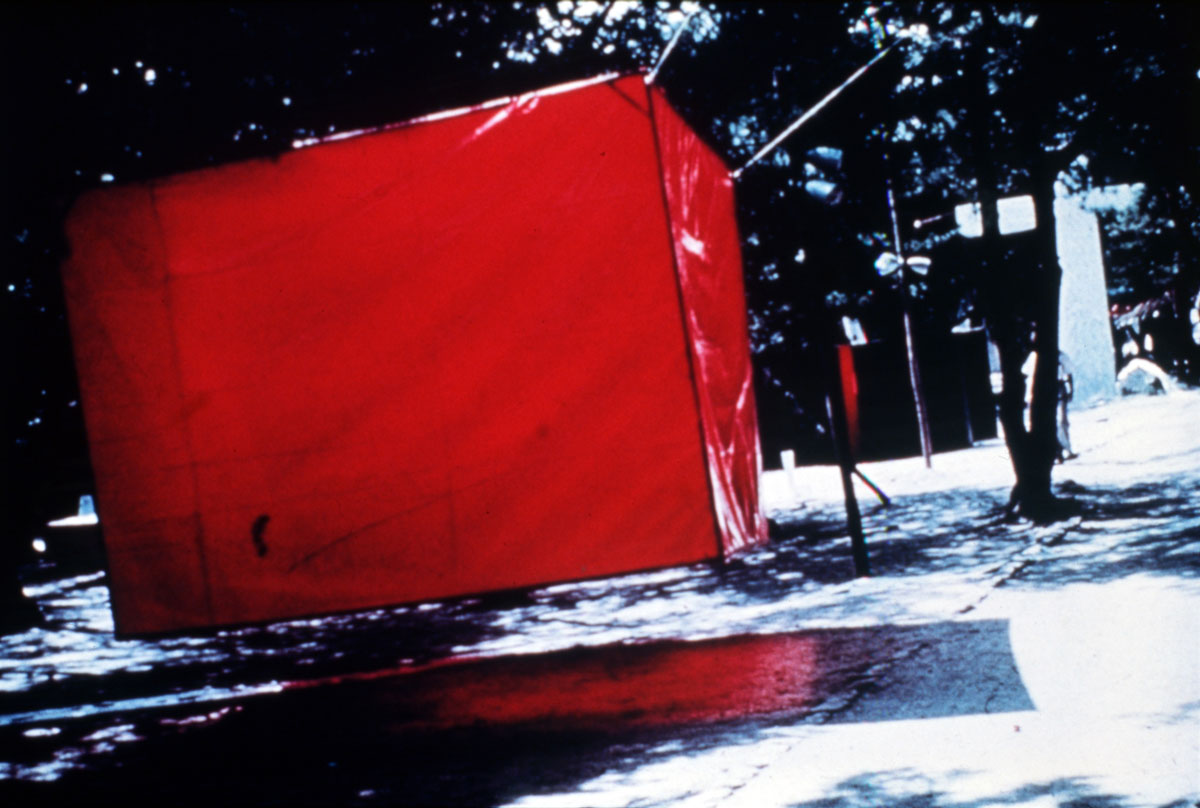
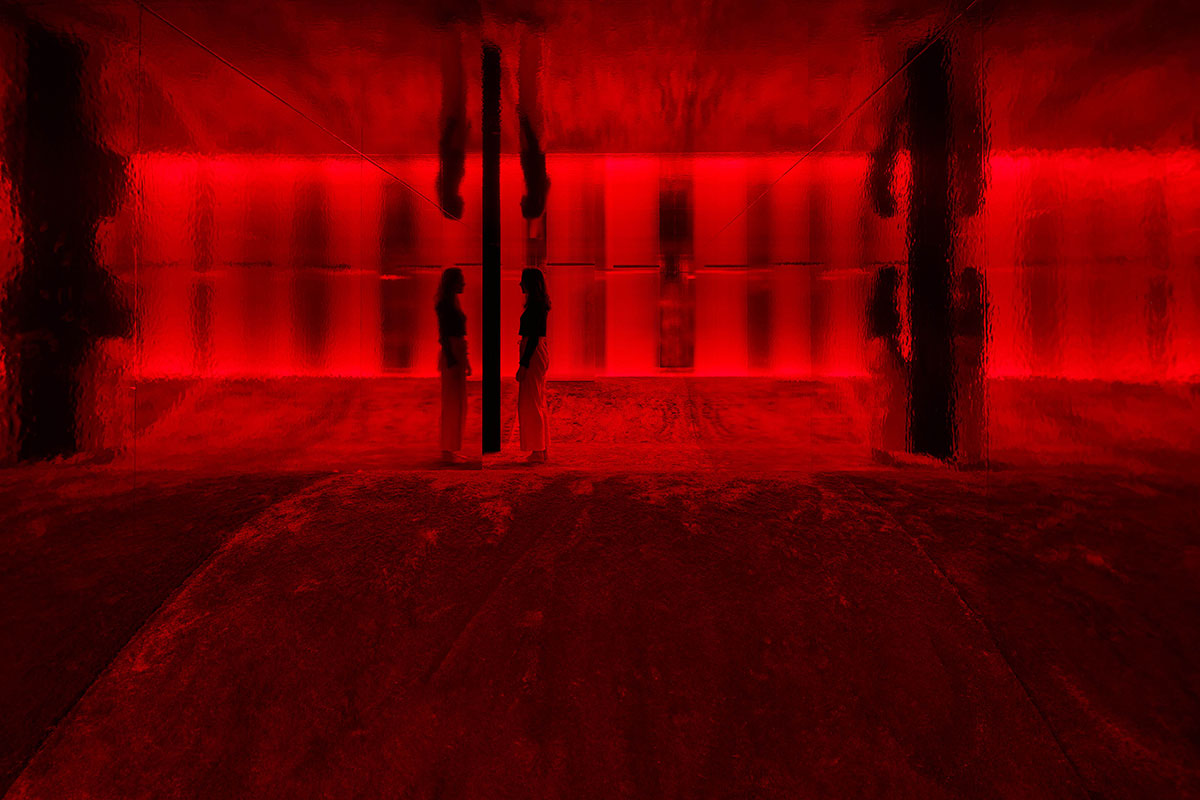
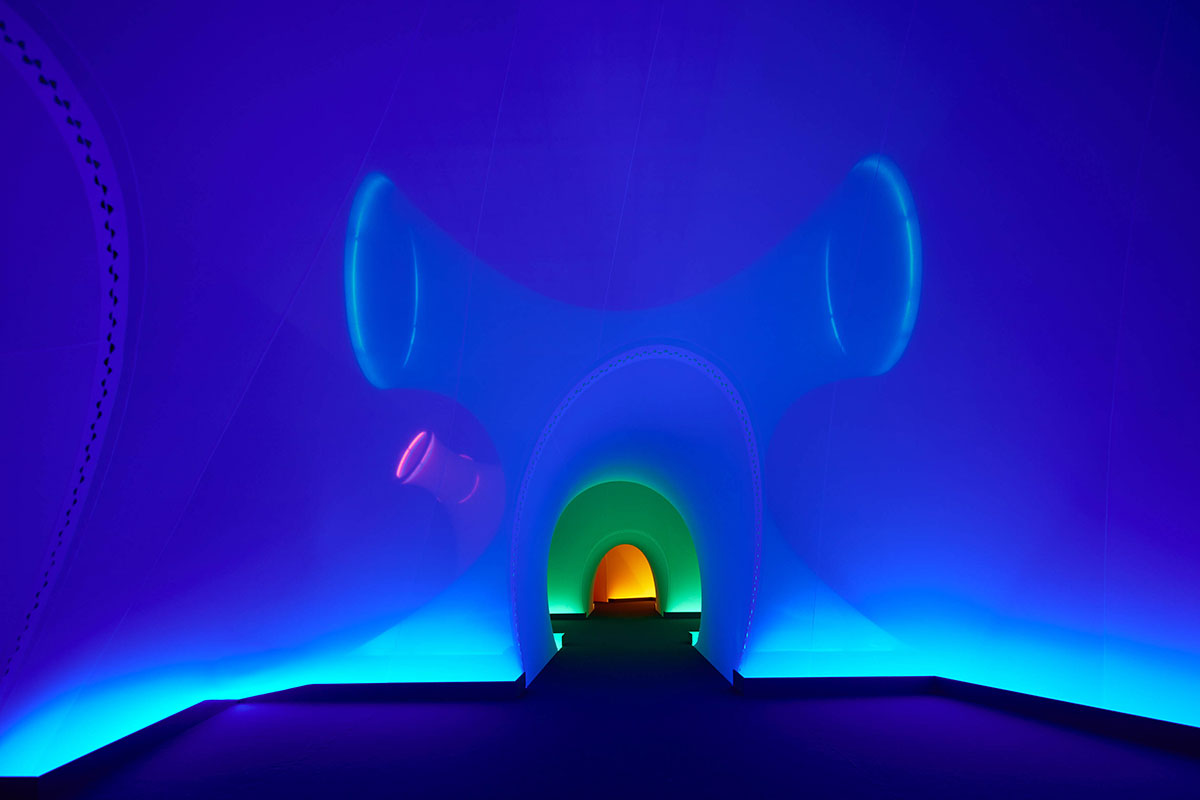
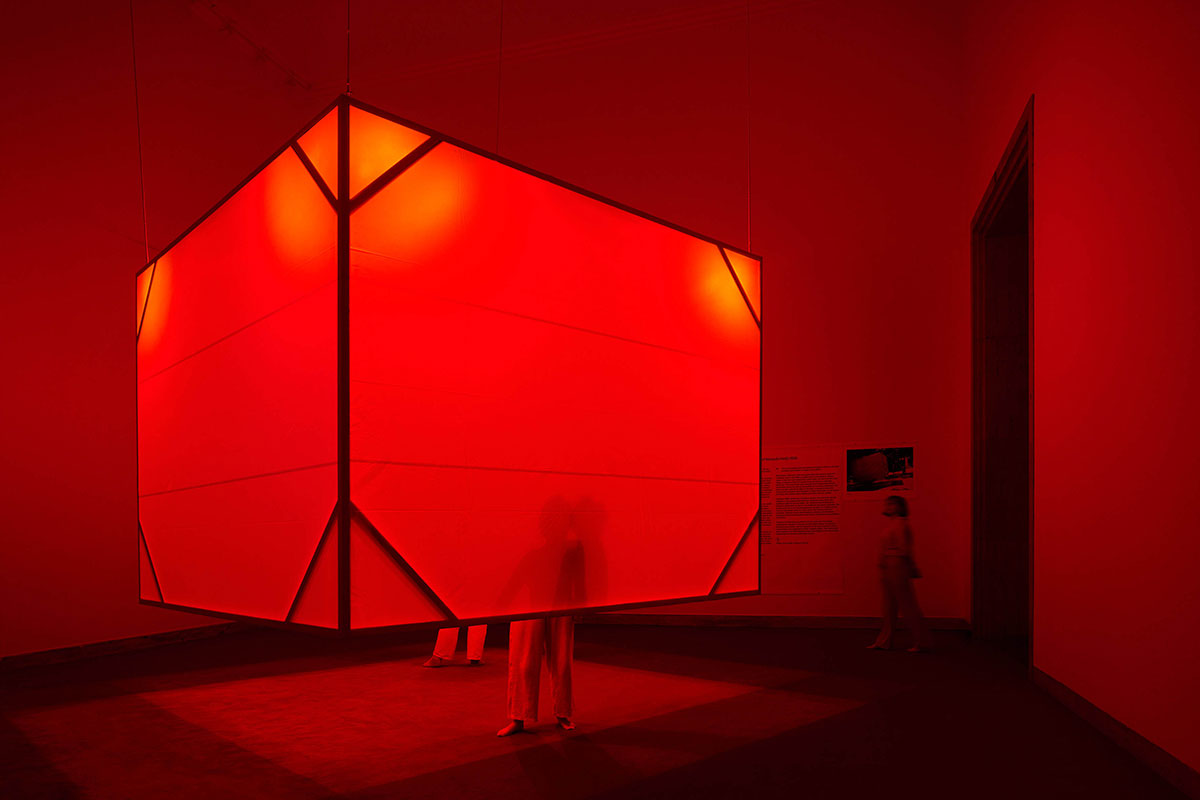
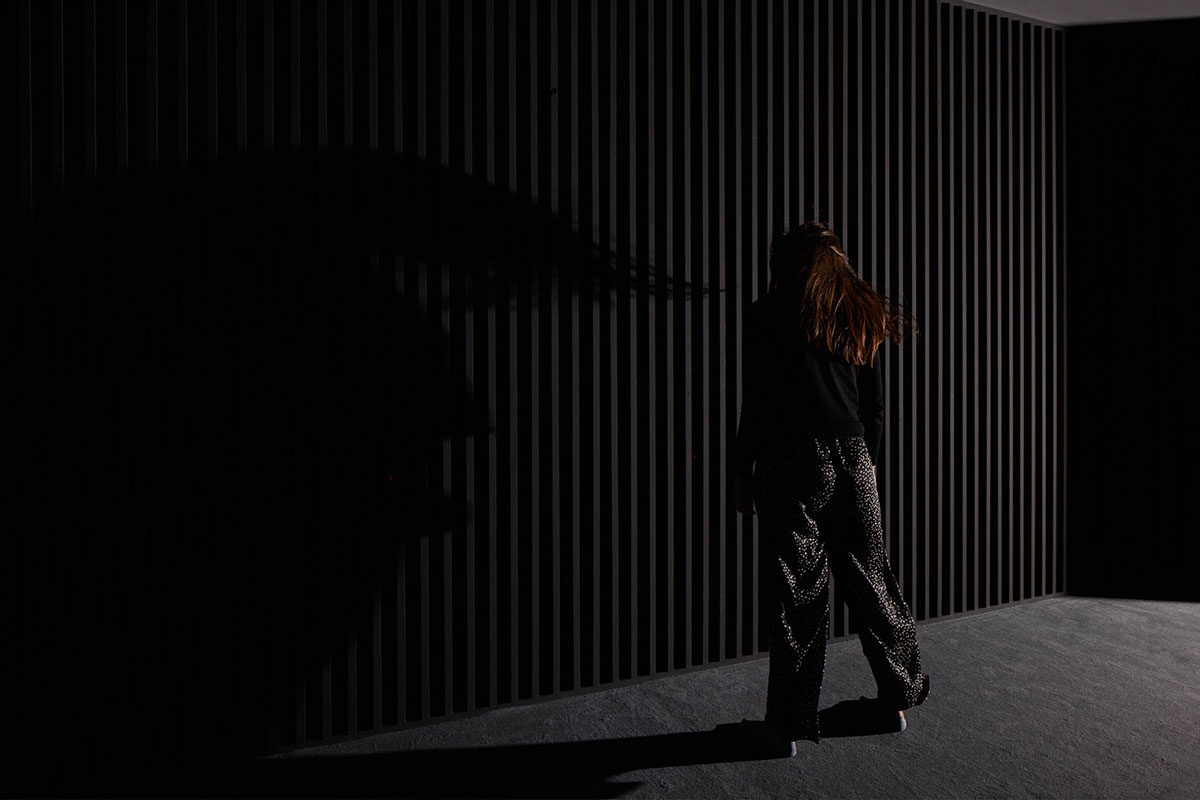
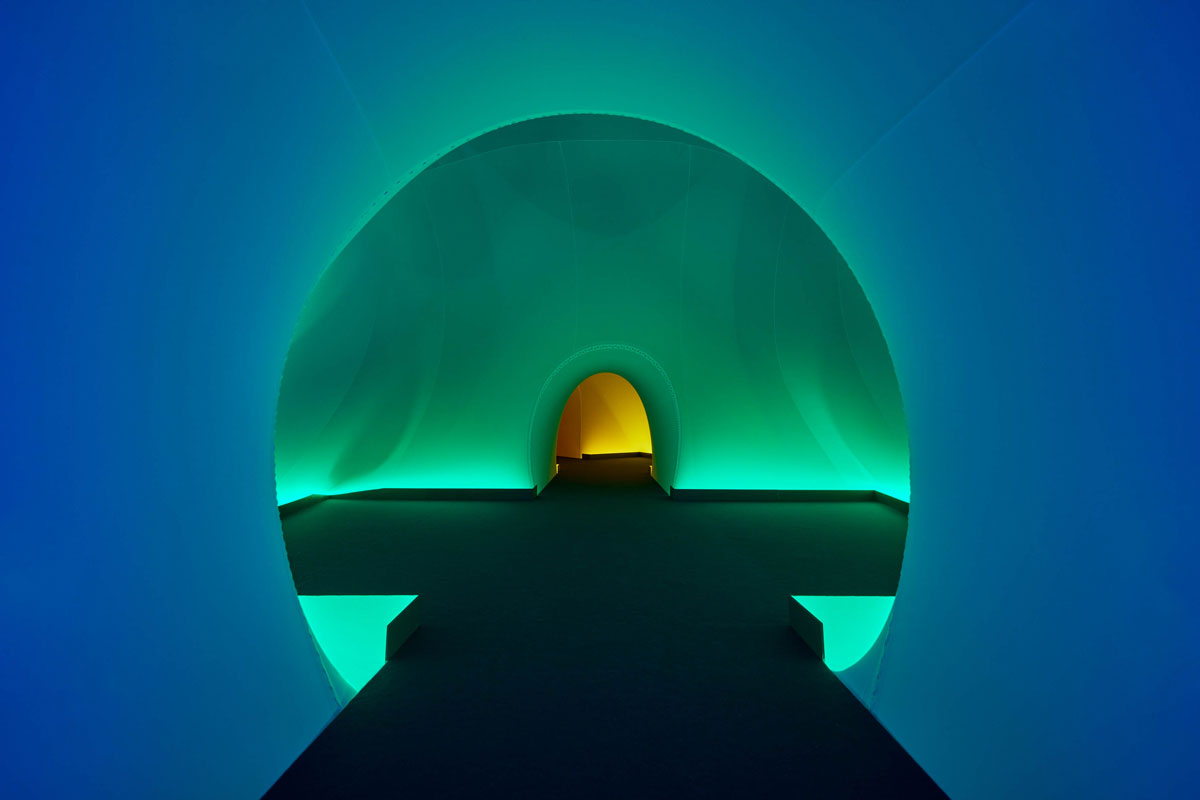
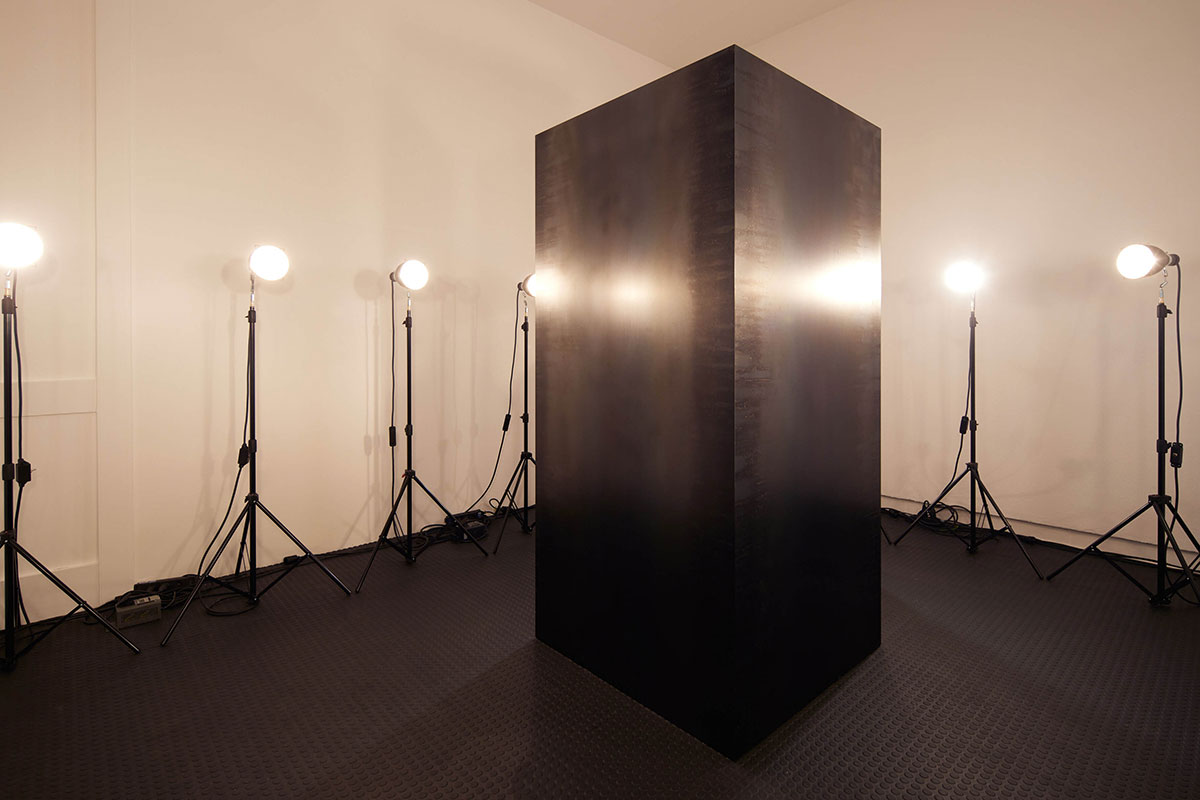
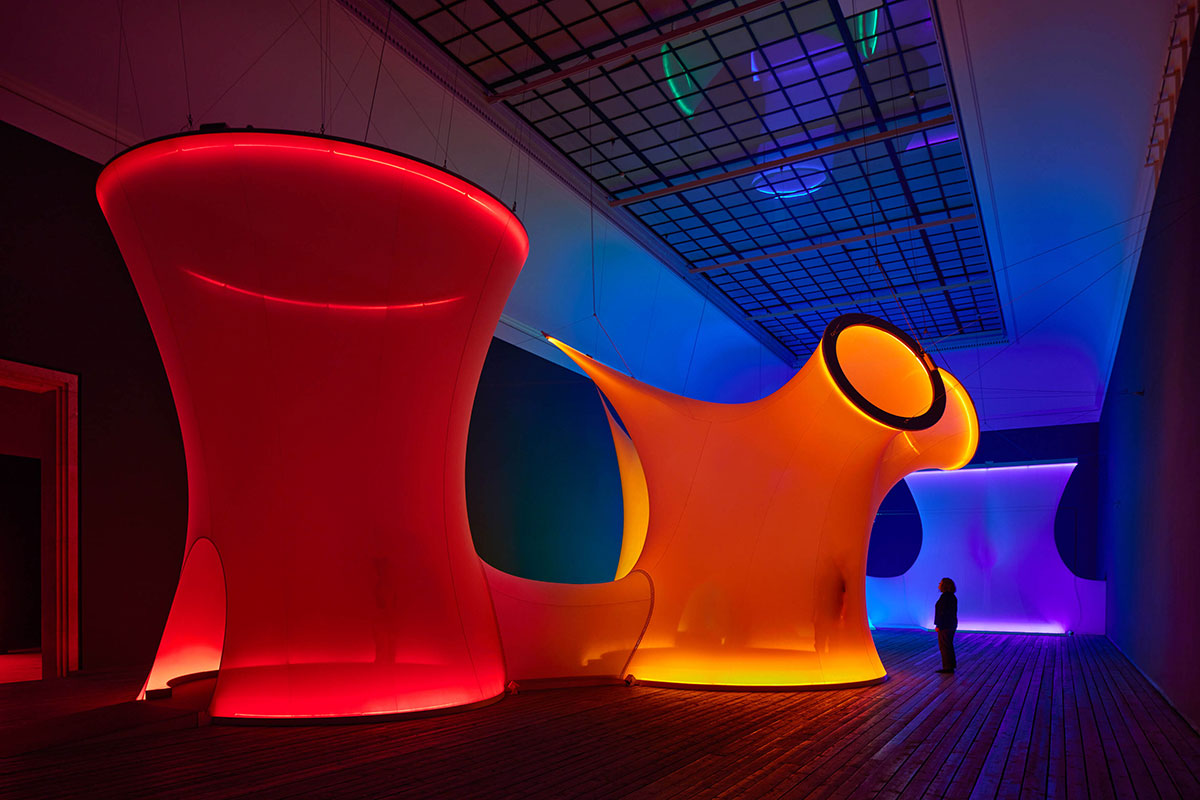
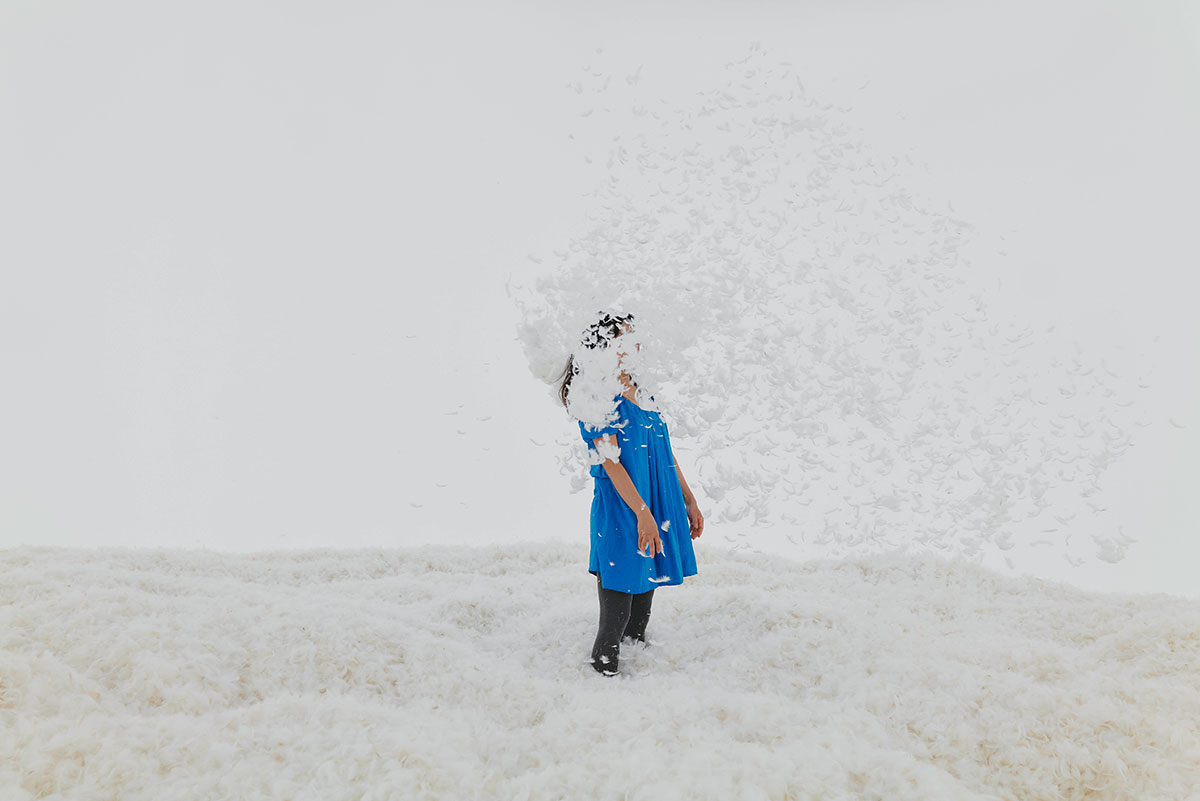
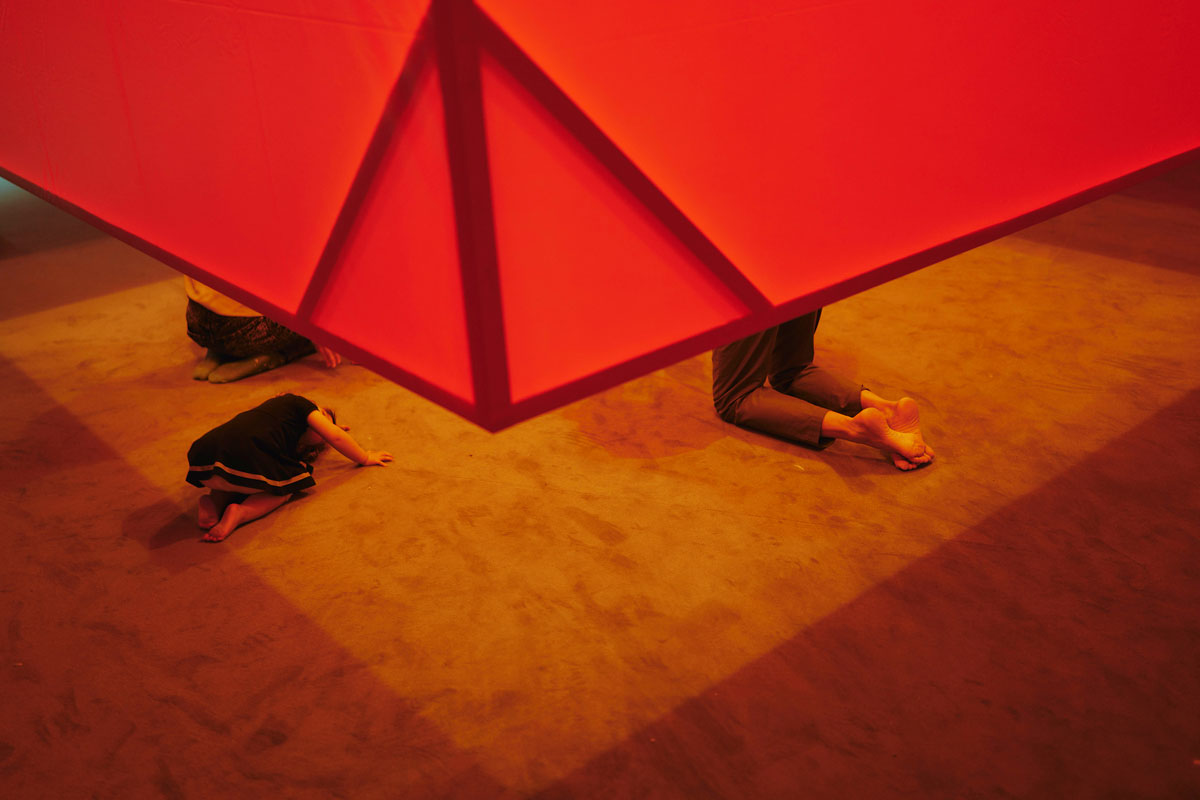
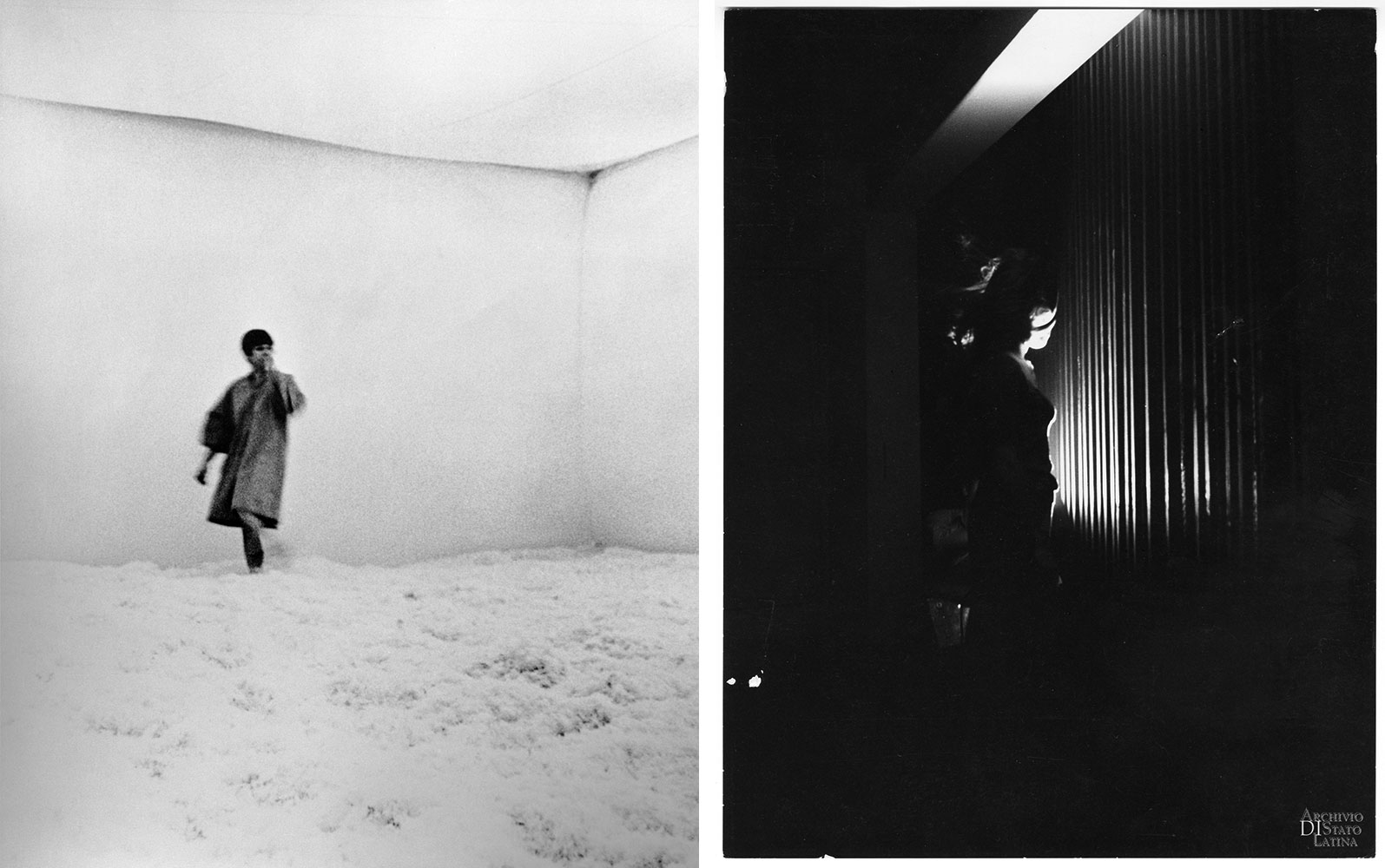
Right: Laura Grisi, Wind Speed 40 Knots, 1968, environment of black-painted wood and wind machines. Installation view from “il Teatro delle Mostre”, La Tartaruga, Rome, 27th May 1968, Courtesy Laura Grisi Estate, Rome, and Latina State Archives

